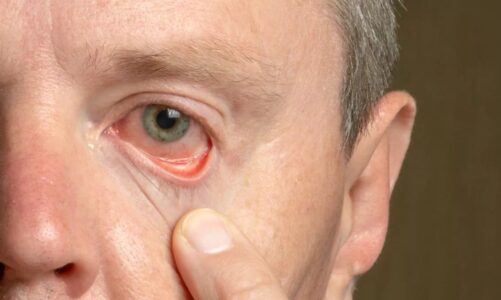Effective communication is one of the most critical skills a healthcare professional can possess, yet it is often one of the most challenging to teach. While medical schools dedicate substantial time to the science of medicine, the art of communication frequently receives less attention, despite its profound impact on patient care. In this blog, we will explore the importance of teaching effective patient communication skills to medical students, diving into innovative techniques and lesser-discussed aspects that can make a significant difference in how future doctors interact with their patients.
The high stakes of patient communication
Poor communication in healthcare can lead to misunderstandings, decreased patient satisfaction, and even medical errors. A study published in jama revealed that communication failures were implicated in nearly 30% of all medical malpractice cases, resulting in over $1.7 billion in payouts over a five-year period . This statistic underscores the critical need for medical students to master communication skills early in their training.
Beyond avoiding errors, effective communication is essential for building trust, ensuring patient compliance, and improving overall health outcomes. Patients who feel heard and understood are more likely to follow treatment plans and report higher levels of satisfaction with their care. According to a survey by the agency for healthcare research and quality, patients who rated their communication with healthcare providers as excellent were 62% more likely to adhere to prescribed treatments.
Moving beyond traditional methods: innovative approaches to communication training
Traditional communication training in medical schools often involves role-playing exercises with standardized patients (actors trained to simulate real-life scenarios). While this method has its merits, there are more innovative approaches that can provide deeper insights and foster more authentic communication skills.
Empathy training through virtual reality (vr): one of the newer methods being explored is the use of vr to teach empathy—a critical component of patient communication. In a vr simulation, medical students can experience what it’s like to be a patient with a chronic condition, such as alzheimer’s disease or severe arthritis. This immersive experience allows students to better understand the challenges their patients face, fostering empathy and improving their ability to communicate in a compassionate and patient-centered manner. A study published in frontiers in psychology found that medical students who underwent vr empathy training demonstrated a 35% improvement in their ability to communicate with patients compared to those who received traditional training.
Narrative medicine: another innovative approach is the incorporation of narrative medicine into the curriculum. Narrative medicine involves the use of storytelling to improve the understanding of patients’ experiences and perspectives. By writing and reflecting on patient stories, medical students can develop a deeper appreciation for the emotional and psychological aspects of patient care. This practice not only enhances communication skills but also helps prevent burnout by fostering a stronger connection between doctors and their patients. Research published in academic medicine showed that students who participated in narrative medicine workshops were 28% more likely to engage in meaningful patient dialogue during clinical encounters.
Real-time feedback systems: implementing real-time feedback systems during clinical rotations is another effective way to teach communication skills. These systems allow supervisors to provide immediate feedback on students’ interactions with patients, highlighting areas of strength and identifying opportunities for improvement. For example, a student might receive feedback on their use of medical jargon or their ability to listen actively. A study in the journal of medical education found that students who received real-time feedback improved their communication skills by 32% over those who only received traditional end-of-rotation evaluations.
Addressing cultural competence and health literacy
Effective communication is not just about conveying information—it’s also about ensuring that information is understood. This is particularly important when dealing with patients from diverse cultural backgrounds or those with limited health literacy. Cultural competence and health literacy are crucial components of patient communication that are often underemphasized in traditional medical training.
Cultural competence training: teaching medical students to communicate effectively with patients from diverse cultural backgrounds requires more than just awareness of cultural differences. It involves training students to recognize their own biases and to adapt their communication style to meet the needs of each patient. For instance, students might learn how to ask open-ended questions that invite patients to share their cultural beliefs and practices, which can significantly impact their health behaviors. According to a study published in medical education, students who received formal training in cultural competence were 45% more likely to deliver care that was perceived as culturally sensitive by patients.
Health literacy and simplified communication: health literacy—the ability of patients to understand health information—is another critical aspect of patient communication. Medical students must be trained to convey complex medical information in a way that is understandable to all patients, regardless of their education level. This can involve using plain language, visual aids, and the teach-back method, where patients are asked to repeat the information in their own words to confirm understanding. The national assessment of adult literacy reported that only 12% of u.S. Adults have proficient health literacy, highlighting the importance of this training.
The psychological impact of communication on patients
Effective communication goes beyond the technical aspects of delivering information—it also has a profound psychological impact on patients. Positive communication can reduce anxiety, build trust, and even improve physical health outcomes. A lesser-discussed benefit of teaching good communication skills to medical students is the potential to mitigate the nocebo effect—the phenomenon where negative expectations can lead to worse health outcomes.
For instance, if a doctor unintentionally communicates uncertainty or pessimism about a treatment’s effectiveness, the patient may experience increased anxiety, which can exacerbate symptoms. On the other hand, a doctor who communicates confidently and optimistically can foster a placebo effect, where the patient’s positive expectations contribute to better outcomes. According to a review in the bmj, effective communication that builds positive expectations can improve patient outcomes by 30% across various conditions.
The role of lifelong learning in communication skills
Finally, it’s important to recognize that teaching communication skills should not end with medical school graduation. Lifelong learning is essential to continually refine these skills as healthcare evolves and as professionals encounter new patient populations with different needs and challenges. Continuing education programs, workshops, and peer feedback are all valuable tools for maintaining and improving communication skills throughout a medical career.
A study published in the annals of family medicine found that healthcare providers who participated in ongoing communication skills training were 40% more likely to receive positive feedback from patients about their communication style, compared to those who did not engage in continuous learning.
Conclusion
Teaching effective patient communication skills to medical students is about more than just preventing errors—it’s about fostering empathy, cultural competence, and a deep understanding of the human experience. By embracing innovative training methods like vr empathy exercises, narrative medicine, and real-time feedback, medical schools can better prepare future doctors to communicate effectively with their patients. Moreover, by addressing the often-overlooked aspects of cultural competence, health literacy, and the psychological impact of communication, we can ensure that medical students are equipped to provide truly patient-centered care. As the healthcare landscape continues to evolve, the commitment to lifelong learning in communication skills will be key to improving patient outcomes and building trust in the patient-doctor relationship.




